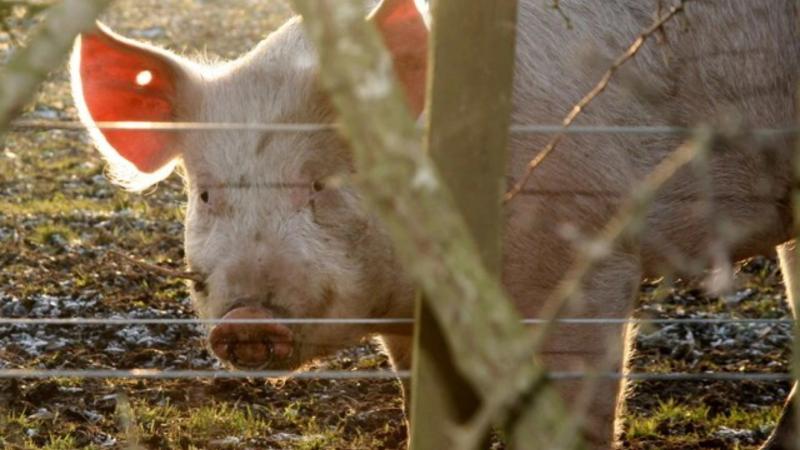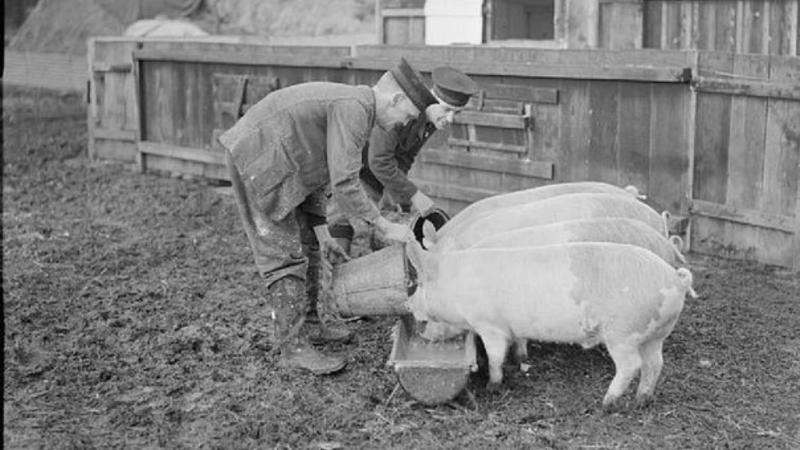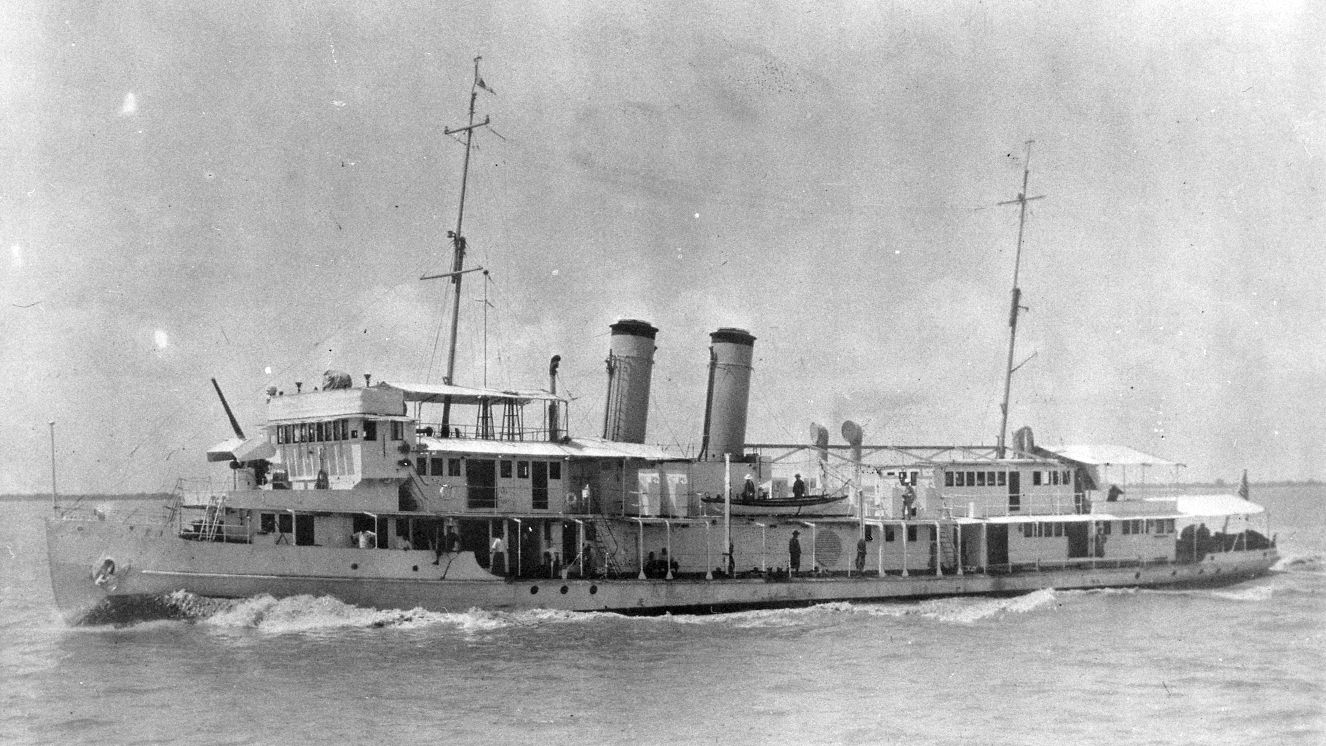PIG WAR: 1859 US-BRITISH STANDOFF OVER SAN JUAN ISLAND

America and Britain famously fought over spilled tea, but did you know that bacon almost drove the two nations back to war? Well, sort of. Back when Great Britain still owned Canada a heated dispute involving a pig would have the nations back at odds with each other with military forces ready to attack their opposition. The Pig War is one of the strangest war history stories you’ll find but thankfully, the only losses involved were a single pig and the potatoes it was eating.
Pre-Pig War Tensions Between US and Britain
To understand the Pig War, you have to understand how the United States and Canada decided to split Oregon.
Known as the Oregon Treaty of June 15, 1846, Oregon Country was split along the 49th parallel to the Pacific Ocean with the middle of a channel found between Vancouver Island and the North American continent being a dividing line.
However, this could apply to two different straits, one on each side of the San Juan Islands—the Haro Strait to the west or the Rosario Strait to the east.
Google Maps was still yet to be invented, so, countries had to rely on more traditional maps. The ones they used were far less accurate on the matter.
The Boundary Commission was founded in 1856. To clarify the issue with James C. Prevost serving as Britain’s First Commissioner and Archibald Campbell representing the Americans—each picked a different strait.
Prevost believed the treaty was referring to the Rosario Strait, while Campbell felt the Haro Strait was the intended boundary.
Ultimately, even with a compromise on the table, there was no resolution and both nations claimed the San Juan Islands—what could go wrong?
The Hudson's Bay Company
The Hudson's Bay Company (HBC) is the longest-running business in the history of North America. Today, they operate a variety of ventures involving real estate, fashion, retail, technology, and more—most notably, they own Saks Fifth Avenue.
However, on December 15, 1853, HBC founded its Belle Vue Sheep Farm on San Juan Island and continued to have a presence in the region.
In the middle of 1859, Americans had settled on San Juan Island with neither nation willing to concede the land. These events would set the stage for the Pig War as the neighbors would experience a catalyst involving swine and a garden.

Lyman Cutlar Shoots and Kills a Pig
Thirteen is seen by many as an unlucky number, so it feels fitting that literally 13 years following the adoption of the Oregon Treaty, a point of conflict would come to be that could not be ignored.
Lyman Cutlar was an American farmer living on the island because of the Donation Land Claim Act. One day, he came across a pig eating potatoes in his garden. This was an occurrence that Cutlar had sadly experienced before.
Tired of the intruding swine, he shot and killed the pig who ended up being the property of an employee of HBC, Charles Griffin.
It turns out that Griffin let his pigs freely roam, which caused the incident. When the two parties couldn’t ultimately agree to reimbursement for the animal, the British threatened to arrest Cutlar.
However, Americans were upset at this notion. After all, they had fought to be out from under Britain’s rule and Cutlar had a point—why should he have to pay when the pig’s owner failed to keep his animal out of his garden?
The U.S. Army was in the nearby Washington Territory and Americans would request their help in the matter, further escalating tensions in the region.
US-British Military Standoff on San Juan Island
Capt. George Pickett and Soldiers from the 9th Infantry Regiment were sent to San Juan Island to keep the British Navy from going on shore.
Three Royal Navy warships commanded by Capt. Geoffrey Hornby was headed to the island to stifle American influence in the area.
After a few tactical errors and some readjustments, the Army would make a camp on the south portion of San Juan Island, and British Royal Marines would make their base on the north.
Bringing troops from both sides into the mix would ratchet up tensions again and by August, hundreds of American Soldiers were facing five British Royal Navy warships and more than 2,100 warfighters.
As this was conspiring and while the Americans were still waiting for reinforcements, Gov. James Douglas of the Colony of Vancouver Island wanted to avoid escalating the situation to avoid bloodshed. This took some work, yet it would finally come to pass.
British Rear Admiral Robert L. Baynes realized that the two nations going to war over a pig wasn’t a good idea and told Gov. Douglas that the conflict wouldn’t escalate further.
[Image]

Resolution of 1859 Pig War and Long-Term Effects
When officials in London and Washington, D.C. found out about the situation on San Juan Island, both governments were less than thrilled.
As a result, President James Buchanan sent the U.S. Army's General-in-Chief Winfield Scott to find a peaceful resolution, considering Scott had helped with such matters twice in the 1830s.
Talks were had, and both nations agreed to maintain a military presence on the island but limited troops to 100 men each. An arrangement that went on for 12 years with the British to the north and American forces to the south.
Both lived in peace, though Britain had considered taking the island under its control once the American Civil War broke loose.
Vancouver Island merged with British Columbia, ultimately joining the Canadian Confederation in 1871, which led to the two nations signing the Treaty of Washington in the same year to figure things out once and for all.
An international arbitration was decided upon to handle the dispute and German Emperor Wilhelm I was put in charge.
After a meeting that lasted almost a year in Geneva, Switzerland, San Juan Island was ruled to be part of the United States.
The Royal Marines left in the same year and in 1874, the American troops did the same.
There were additional politics involved and the entire process was a lot of pomp and circumstance in a way; however, the Pig War was thankfully not as exciting as it could have been.
Today, visitors to the San Juan Island National Historical Park can explore these beautiful lands and learn more about the history of the Pig War. The British flag is even raised each day when the troops maintained their camp in remembrance.
Suggested reads:
BY BUDDY BLOUIN
Buddy Blouin is a Contributing Writer at VeteranLife.com
Buddy Blouin is a Contributing Writer at VeteranLife.com



